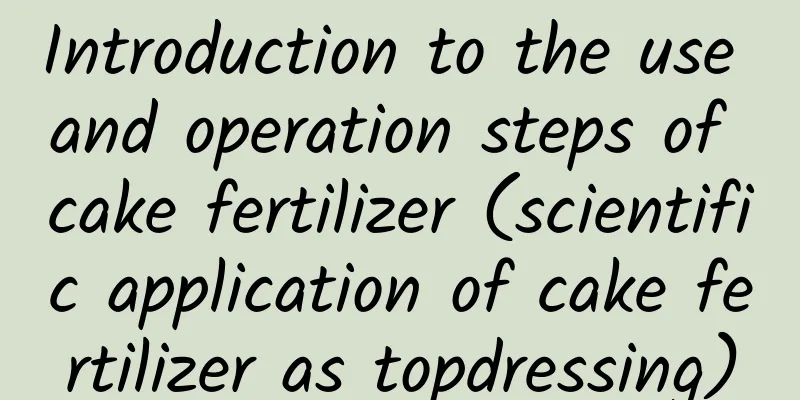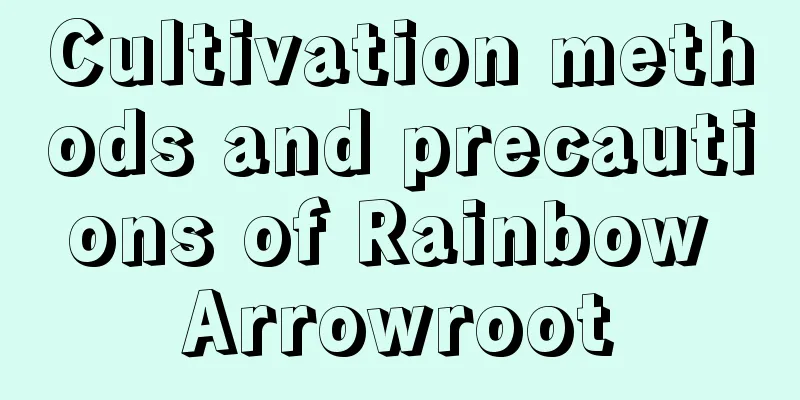Introduction to the use and operation steps of cake fertilizer (scientific application of cake fertilizer as topdressing)

What is cake fertilizerCake fertilizer is actually the residue left after oil crops are squeezed for oil. For example, after various seeds with high oil content are squeezed to remove oil, the remaining residue is used as fertilizer, which is generally called cake fertilizer . Cake fertilizer is often used on greenhouse vegetable crops and is a high-quality organic fertilizer. Applying cake fertilizer can not only improve the soil , but also improve the quality of crops . However, the nutrients in cake fertilizer can only be absorbed after fermentation. Composition and properties of cake fertilizerCake fertilizer is rich in organic matter and nitrogen, and contains a considerable amount of phosphorus, potassium and various trace elements. It generally contains about 75%~85% organic matter, 2%~7% N, 1%~2% P2O, and 1%~2% K2O. The nitrogen and phosphorus in cake fertilizer are mostly in organic form, with nitrogen mainly in the form of protein, phosphorus mainly in the form of phytochemicals and lecithin, and potassium mostly water-soluble. These organic nitrogen and phosphorus must be decomposed by microorganisms before they can be absorbed and utilized by crops. How to apply cake fertilizer scientificallyFermentation before useThe use of cake fertilizer after fermentation can effectively avoid its harmful effects . Because cake fertilizer contains organic matter, fermentation and decomposition will produce formic acid, acetic acid, lactic acid and other acid substances that are harmful to seed germination and young root development, especially when applied to sandy soil and dry land. This phenomenon can be avoided by fermenting it. Some cake fertilizers contain about 10% oil, which decomposes slowly in the soil, reducing the moisture content in the soil and preventing root absorption. In addition, if cake fertilizers are not fermented, they may burn the roots . Use as basal fertilizer or topdressingWhen used as basal fertilizer, it can be directly fermented and applied one week before planting. It is best to apply it to a depth of 10-20 cm in the soil layer. It is not suitable to apply it directly on the surface, and it is also not suitable to apply it too deep. If it is used as seed fertilizer, it must be fully decomposed to avoid burning the roots and affecting seed germination, or it can be applied to the soil as base fertilizer together with composted organic fertilizer, which is safer. When used as top dressing, it must also undergo fermentation. If it is not fermented, its fertilizer effect will be slower and the best time for top dressing will be missed. Specific application method of cake fertilizerApply it before planting the plants. First, dig the planting holes, apply about 100 grams of cake fertilizer to each hole, mix it evenly with the soil and then plant. This method of fertilization can increase crop yields by about 10%-20%, and it has good commercial quality and is particularly effective in increasing yields on cucumbers and tomatoes. When applying fertilizer in field management, we can also mix it with base fertilizer. The amount of fertilizer applied depends on the crop, soil fertility and temperature. More fertilizer should be applied for crops with low soil fertility and fertilizer-tolerant varieties, otherwise the amount of fertilizer should be reduced. |
Recommend
Why doesn't Clivia like to grow
1. No repotting If the Clivia does not grow well ...
How to prune purslane and how to grow it into an old pile
1. How to prune tree purslane 1. Pruning during t...
What is the best month to plant peas in Northeast China?
When to plant peas in Northeast China Northeast p...
Is camellia afraid of the sun?
1. Are you afraid of the sun? It can bask in the ...
What to do if the leaves of Impatiens balsamina wilt
1. Water appropriately Reason: It does not requir...
Is the Lotus Lantern suitable for a large or small pot?
Is it better to use a large or small pot for the ...
How to survive the winter
1. Control the temperature The temperature in win...
How to grow green radish in fish tank hydroponics to make it more vigorous
The plant Pothos can be grown in soil or in water...
Which month is the best to sow shepherd's purse?
Shepherd's purse, also known as ground rice v...
The leaves of the "kalanchoe" in the unit turned yellow. After investigation, we found out that it was because the windows were not opened!
So Huahua quickly thought about whether there was...
How often should I water the Fujian tea bonsai?
1. How often should I water? There is no saying a...
Dragon fruit planting technology
1. Seed collection Put the ripe and healthy pitay...
Cultivation methods and precautions of horse cherry potted plants
The horse cherry potted plant is a relatively eas...
When is the best time to transplant cockscomb?
When transplanting cockscomb, it is best to use w...
How to water the Dancing with the Wind and when to water it
1. Watering method When watering the Dancing with...









